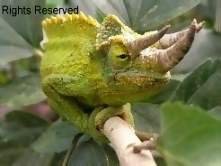The silent Killer
The silent killer, the night stalker, the versatile hunter… and
many other names have been used to describe this cat. Smallest of the
four great cats (lion, Jaguar, Tiger) and at close range almost looks
like a Jaguar. In the savannahs of Kenya, this cat has been confused
with the cheetah by first time visitors. At a second glance you miss the
tear marks of the cheetah.
The leopard has been associated with darkness and many myths exist in the traditional African
society. This has been due to fact that the leopard makes about 90 % of
their kills silently during the night. The kill is then dragged and
hoisted on to a tree for later feeding. These minutes before raising the
kill up the tree are extremely crucial for it is the time that most
kills are lost to hyenas and lions attracted by the smell of blood. They
have quite a varied diet ranging from animals double their size to
smaller antelopes, birds and crawling beetles. Their diet also depends
on what is available in their range.
Usually this will include wildebeest calves, zebra fawns, gazelles,
impalas, rodents among others. They are known to hunt domestic animals
including calves, sheep and goats in areas where they inhabit close to
human settlements.
The physical build up of the leopard is amazingly strong. It is said
that their muscles are 7 times stronger than man’s muscle, pound for
pound. This explains their capability to lift carcasses more than twice
their body up the trees. It an advantage that the leopard enjoys in that
after the kill is up the tree it is safe from its enemies, usually the
lions and hyenas. In a couple of times the lions have tried to get up
the tree and get the kill. Unfortunately, lions in Kenya are not good
tree climbers, unlike their partners in Lake Manyara, Tanzania. What’s
more, the kill can be eaten for the next few days depending on the size.
Spotting such caches during safaris is almost a guarantee that you can view the leopard at least one more time.
Their claws are retractable and extremely sharp. The scratching of
the backs of trees cleans the outer keratin shell keeping them sharp all
the time. This is how they are able to catch their prey before the
killer bite. Usually the scratches inflicted this way are very deep and
lethal.
This master of deception has body markings that aid in staying
hidden. The pattern of their body coat is in rosettes and each leopard
has its own specific print that matches no other. The coat varies in
color from light tawny to brown-yellowish. The black spots help them to
stay hidden under thickets.
They can run up to 40 miles an hour for short distances. The leopard
is a good swimmer and in addition to that can leap 20 feet high. The
horizontal jump can be up to 10 feet. Despite this prowess, they
primarily depend on outwitting the prey, hence the title ‘master of
deception’.
They can easily adapt to most environments as long as there is food
availability. In Kenya and Tanzania, due to availability of huge
thickets, their preference is in the bushes. These provide all the food
supply and keep them hidden. In many occasions their presence is noticed
through carcasses on tree tops but the leopard is nowhere to be seen.
Their tail is often what gives them away. When they rest on the trees
their bodies are usually camouflaged but the dangling tail sells them
off. In the nights they are usually heard and recognized through their
’sawing-like’ sound.
In addition to their being silent killers, they are generally
solitary cats. The only relationships noticed are the short-lived mating
period and a female with her cubs. They produce between 2-4 cubs after a
gestation period of between 80-100 days. Most of the times, it is only
1-2 cubs that survive. Lions and hyenas kill many of their cubs and
because of that the mother has to move them quite often to avoid
attracting too much attention.
After 22-24 months the cubs leave their mother and start their solitary life.
In most parts of Kenya, early morning hours are best time for looking
out for them and late afternoon hours. These are the hours when the
temperatures are low as they are more active like most of the big cats.
There exists an-ever ending fight between the olive baboons in some
parts of Kenya. The baboons are heard screaming during the nights and it
has been proofed beyond doubt that one of the reasons is the presence
of the leopard. The leopards in Kenya do attack the baboons and in turn
the baboons attack them. In any case the baboons out number the leopard
by far and relies on group protection. But the leopards have had their
successes with having a baboon for a meal.
Coming up next from the African safari desk: facts about the Croccodile. See you then.
safaris kenya desk.
Saturday, September 29, 2012
Subscribe to:
Comments (Atom)








